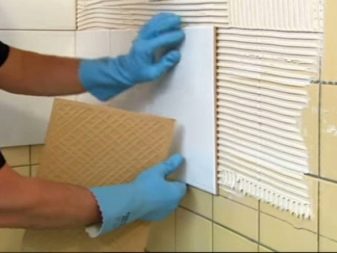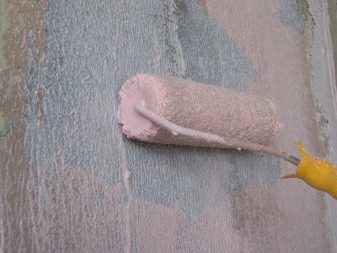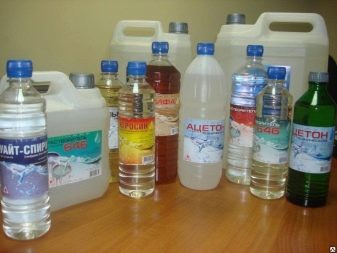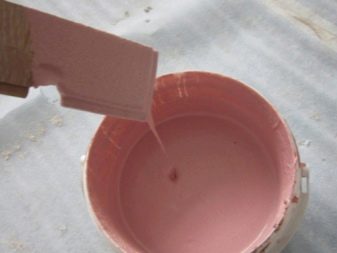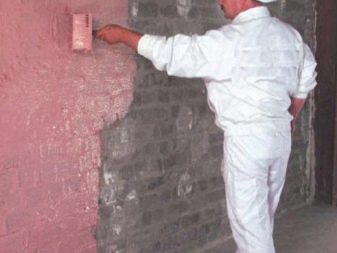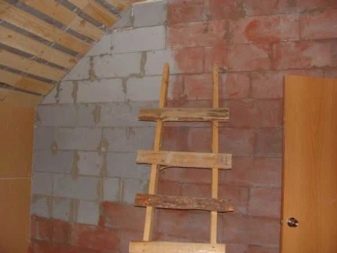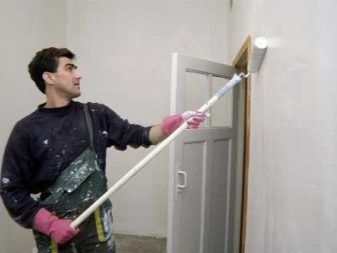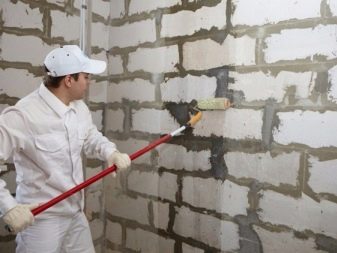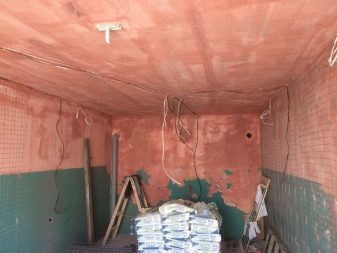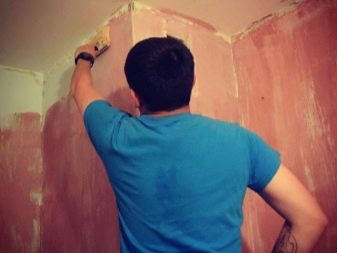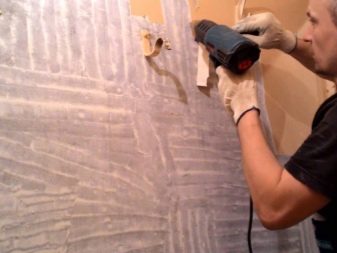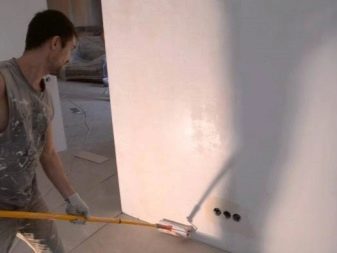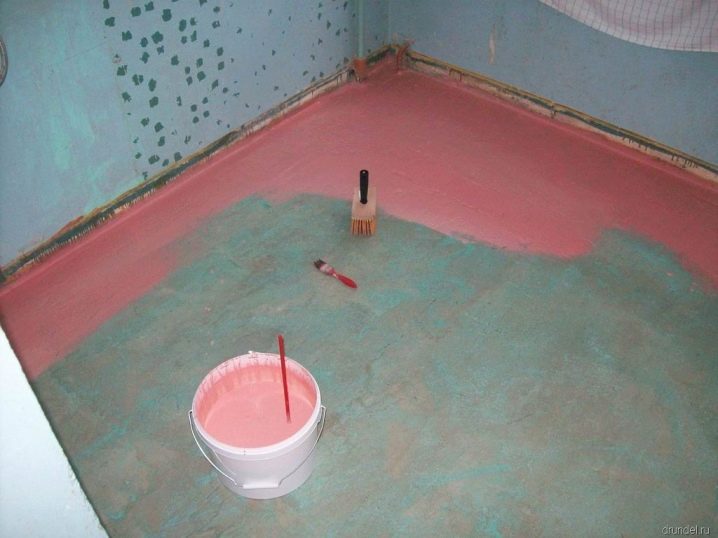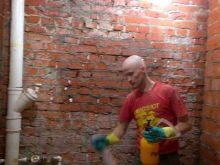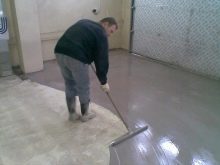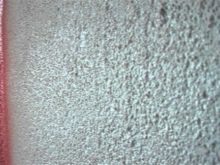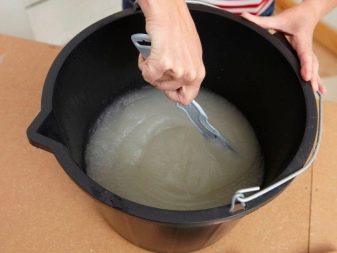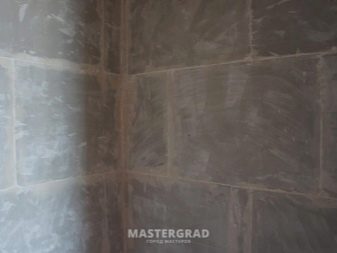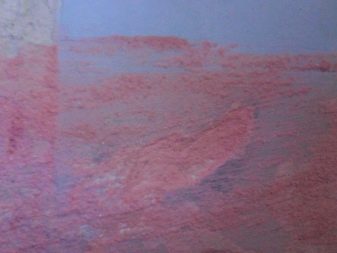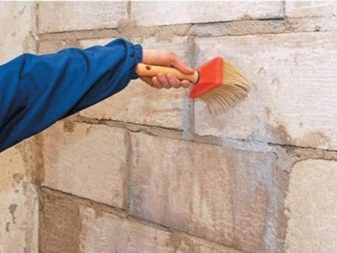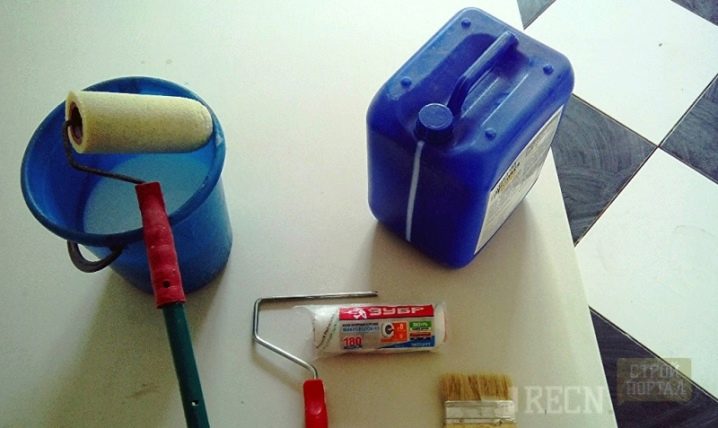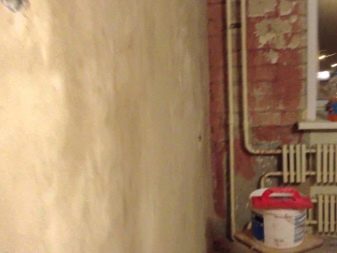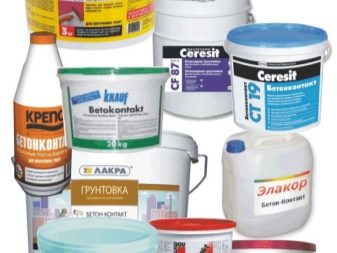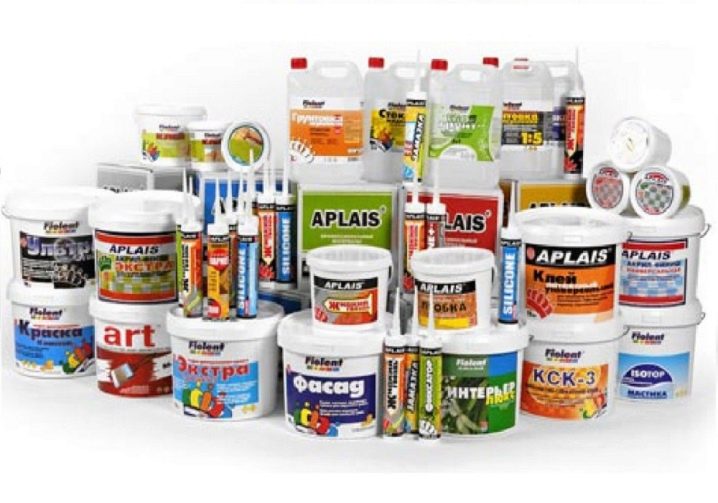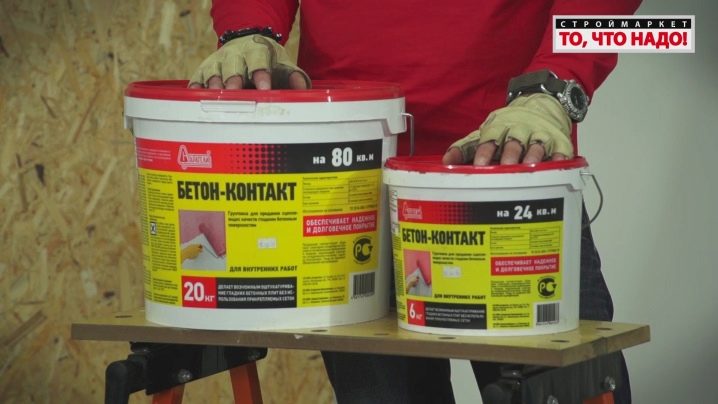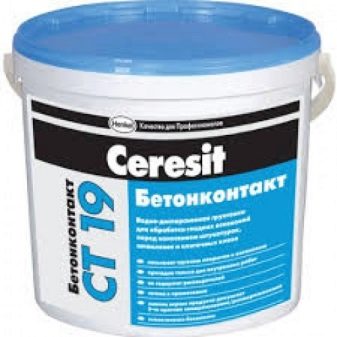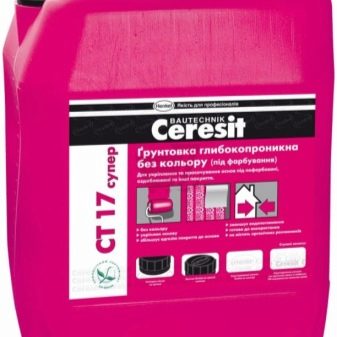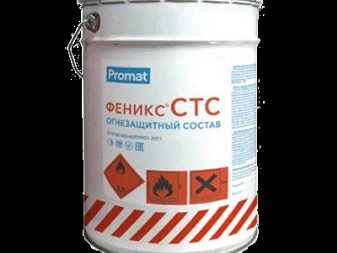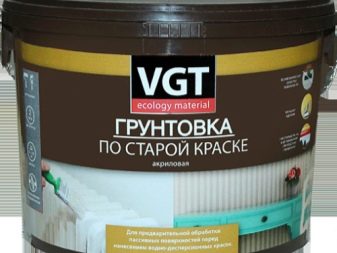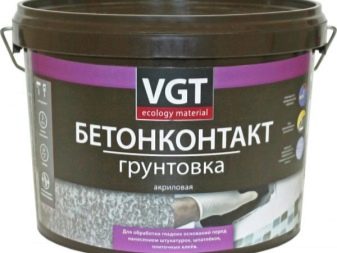Concrete contact consumption per 1 m2: standards for different surfaces
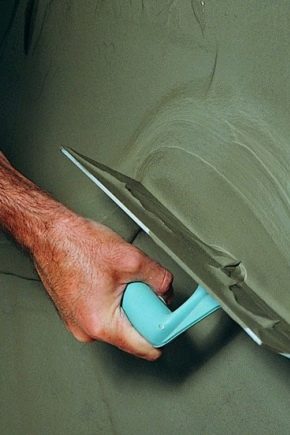
Initially, builders needed a composition to improve adhesion to concrete, hence the name, but the resulting formula allowed us to greatly expand the scope of application of the new product. Tiles, old enamel paint, drywall, polished steel required either complete dismantling or careful sanding, incising. With the advent of concrete contact, this situation has changed.
The universal primer provided high adhesion with any type of base and topcoat. The durability of attachment today is about 80 years.
Features and composition
The basis of concrete contact is acrylic (latex) and glue, adhesion, roughness provided by cement mixes, gypsum, quartz sand or marble chips.The size of the fractions under the putty - 0.3, under the plaster - up to 0.6 mm. Numerous additives from polymers, additives increase the quality of the material. And they also expand its properties for use in different operating conditions: dry climates, with excess humidity, for floors, walls, etc.
Organic diluents are used as a diluent for preparing the solution. To achieve a homogeneous composition when mixing acrylic blends with water is difficult, therefore, it can be used only in the case of manufacturer's recommendation.
The degree of penetration in the range:
- for universal mix - 5 cm;
- deep penetration - 10 cm.
The drying time of concrete contact is from 2 to 24 hours based on the climatic characteristics and the possibility of airing the room.
Advantages:
- Versatility. Suitable for all types of surface, does not require careful preparation before application. Insensitive to stubborn oil and other greasy stains. However, the use of such a primer is justified only in cases of smooth and almost non-absorbent surfaces.
- Strength. The finished primer layer does not crack when drilling or other types of construction work.
- Reduces the ability of the base with a porous surface to absorb moisture: brick, plaster, wood, cellular concrete.
- Vapor permeability Acrylic provides the effect of "breathing" walls.
- Resistant to moisture. Biocidal additives also do not allow the penetration of bacteria or mold into the material, even after a time, it remains safe for lining and human health.
- Immunity to low and high temperatures, their differences. This quality occurs only after the soil has dried, the application itself is not lower than t +5 ºС.
- Does not contain flammable substances.
- Does not change properties under the influence of ultraviolet.
- Environmental Safety. The composition of the adhesive does not include toxic substances, which allows the composition to be used not only for external but also for internal work. No special protective equipment is required.
Disadvantages:
- Afraid of dust. Immediately before applying the concrete contact, the surface is necessarily dedusted.
- During work, the finished liquid mixture must be constantly stirred: heavy components settle to the bottom of the tank.
The use of such a primer is justified in cases of smooth and almost non-absorbent surfaces.The maximum shelf life of 6 months to a year. Requires accurate calculation of coverage for different types of foundations.
What determines the expense
The amount of mixture required for application to different surfaces will vary. It all depends on the properties and structure of the walls or floor, primarily on the hygroscopicity or, in other words, the ability to absorb water.
Minimum consumption of concrete contact per 1 m2:
- For bricks, smooth concrete (ground) and sand concrete, which belong to porous surfaces, the recommended consumption is from 0.3 to 0.5 kg.
- For monolith, high-quality concrete, tiles from it, self-leveling cement floors and finishing bricks and other bases with an average porosity from 0.2 to 0.35 kg.
- The ironed concrete smoothed with a trowel, tile, old enamel paint and others corresponding to less porous and smooth materials - from 0.15 to 0.25 kg.
The optimal method to find out the consumption rate for the desired surface is to use a probe for a 1x1 square meter. Select a part of the solution and what will be applied primer. Weigh the mixture along with the container and tool. Then apply the solution. Check how tightly it holds, if needed correct.Then weigh the probe again with the instrument. The difference between the first value and the second is the expense that is needed.
High-quality filling mix is different in that everything looks smooth, there are no clearances, grip evenly. If there are gaps or the adhesion of the mortar is not enough: sand or cement is peeling off at the contact, then another additional layer is needed for reliability. The second application requires always a smaller amount of solution by 20-30%.
Saving mixture
Reduce material consumption will not succeed. Manufacturers warn that the liquid solution may lead to a decrease in adhesion, that is, concrete contact will not be able to stay on smooth surfaces. In addition, in the course of work, the uniformity of drying is disturbed. Water evaporates or absorbs into the substrate too quickly, not giving the opportunity to produce high-quality grip. As a result, the heavy fractions simply fall off.
Minimal losses - the formation of cracks, which would still entail a complete rework, and therefore waste of money in double volume. The watery composition reduces the waterproofing properties of the future surface.
Recommendations
- When buying, always choose a product about which experts and ordinary buyers who have made repairs at home speak positively. Cunning and cunning sellers can sell expired material or even a fake, you need to protect yourself from such an error.
- If you are unsure whether this particular soil is suitable for the surface, use probes for verification or check the store consultant for information. He will tell you which company is better to prefer, how to use, for what surface it will be suitable.
- Before you start work, do not forget to save the necessary space from excessive dust, coarse, fine debris, as well as dirt. Use a vacuum cleaner for large waste (if it is a floor).
If there are irregularities or crumbling areas, they should be cleaned in any convenient way. It is better to dry the surface in advance.
- To work with concrete contact, you can work with what is more convenient for you. Roller or brush is good for small surfaces, spray gun - for large areas. But it should be ensured that the nozzle corresponds to the size of the solution fractions.
- Be sure to wait for the moment when everything is saturated and dry,and only after that apply another layer or a finishing in the form of a tile, for example.
- Finishing finish is better to apply immediately after the primer dries. If this is neglected, then a sufficient amount of dust can accumulate, which subsequently will only lead to a decrease in strength. Therefore, cover the work area with protective material.
- Keep the remains of the primer in positive temperature. If concrete contact freezes, then it will lose all its properties and its further use is useless.
- Try to acquire concrete-contact from well-known and proven brands that do not seek to deceive, but value their reputation.
Top manufacturers
There are many different manufacturers of concrete contacts on the market now. The cost usually ranges between 300-600 rubles per five kilograms. If you wish, you can find more expensive, but not the fact that better. The scope, consumption of the mixture or the finished solution is indicated on the packaging.
Knuf
It produces products for the treatment of any surfaces, the solution is designed for both manual and mechanized work. Consumption is about 0.35 kg / m2. Color - pink to control the uniformity of application. Hardening time - 12 hours.The price of 20 kg - 3330 rubles.
Primer acrylic based Beton Kontakt - it is recommended before laying tile or ceramic granite tiles, applying finishing decorative plaster, putty, with further pouring the floor.
Rotband-grund - produced in the form of a mixture, without solvents, modified dispersion. It is intended for the treatment of porous bases, with an increased absorption of moisture, as well as in preparation for the subsequent leveling with other types of plaster.
"Miners"
The composition of the soil - latex company BASF. Suitable for interior work, including for crumbling walls with old plaster. There are in different sizes: a bucket of 3, 8 or 16 kg. It consists of copolymer acrylic dispersion, sand, water and various useful additives.
Used for walls, ceilings in rooms with normal or high humidity. 5 kg - 315; 8 kg - 725; 16 kg - 1350 rubles. Temperature restrictions during the work - from +5 to + 30 ° С. Short shelf life - no more than 6 months from the date of issue.
There are ready-made solutions for deep penetration - up to 10 cm in a package of 20 kg, which is enough for 67 m2 of base. These are quick-drying solutions that allow further finishing work after 2 hours. The minimum consumption is 0.2 kg / m2. Operating mode in the range from +5 to + 25 ° С. Shelf life - 12 months.
Ceresit (Ceresite)
It produces material for application on smooth substrates, suitable for external and internal work. Consumption 0.3–04 kg / m2. Dries about three hours, the color is pink. 5 kg - 465; 15 kg - 1265 rubles.
- CT 19. Provides frost resistance to the surface during operation. Allowed 5 cycles of freezing for up to two weeks at a temperature not lower than - 40 ° C. Conditions for finishing measures at air and substrate temperatures from +5 to + 30 ° C, humidity should not exceed 80%. The adhesion of the solution to the concrete base in a week - at least 0.5 MPa.
- CT 17. Deep penetration primer containing antiseptic.
Concrete contact "Phoenix"
Soil on quartz sand, creates a uniform rough layer. The mixture has a strong adhesive property. Suitable for internal repairs with different types of surfaces. Consumption 0.2-0.3 kg / m2. Do not freeze, store in a tightly closed container. Packing 20 kg - 1200 rubles, enough for 67-100 m2. Temperature range of application from +5 to + 40 ° C.
VGT
The company produces a coarse dispersion primer for the treatment of poorly absorbing substrates for plaster. Often used before laying ceramic tiles.Full hardening time is about 24 hours. Consumption - 0.25-0.5 kg / m2. The price for 3 kg - 315; 8 kg - 725 rubles.
How to use concrete contact says an expert in the next video.

